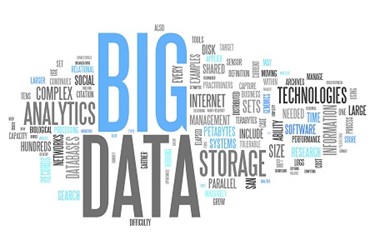4 Examples Of What Big Data Can Do For Your Clients
By Rick Delgado, contributing writer

When many businesses look at Big Data, they see giant dollar signs. To some companies, Big Data is the secret ingredient to guaranteed success now and for many years to come. This is evident in the number of organizations that have adopted Big Data solutions or that plan to do so in the near future. A recent survey from Gartner shows that more than 75 percent of companies are planning to invest in Big Data analytics within the next two years. The idea is to use Big Data to improve targeted marketing efforts, create more efficient operations, improve the overall customer experience, and enhance their security measures.
Big Data can certainly play a part in these efforts, but the truth is that many businesses aren’t seeing the return on investment they hoped for. The same survey indicates that 38 percent of companies that have invested in Big Data have no idea if the ROI will be a net positive or a net negative for them. While ROI hopes may be dashed for some organizations, that doesn’t mean companies should simply give up on Big Data. Data science is still producing some amazing results that businesses shouldn’t ignore.
1. Predicting Train Delays
Getting the trains to run on time is no easy task. A simple delay at one point on the line can create even bigger delays elsewhere. That’s why computer programmers and engineers in Stockholm, Sweden, are looking to use Big Data to better predict when and where delays will happen before they happen, sometimes even two hours in advance. If the predictive analysis proves effective, the train operators may be able to prevent those delays in the first place. The biggest complexity in this endeavor is calculating the ripple effect that occurs when a train is delayed. Based off of historic data when dealing with similar incidents, the Big Data algorithm will try to predict what effects future delays will have. In this way, train operators can make changes when necessary and even alert passengers before they begin their commute.
2. Foraging For Food
It might seem strange to see a high-tech concept like Big Data being used for a low-tech activity like foraging, but that’s exactly what’s happening. The website FallingFruit.org actually uses data to determine which trees throughout the world have the highest chance of dropping fruit. The amount of data needed to calculate this is enormous. The site uses data from the U.S. Department of Agriculture, foraging maps, tree inventories, and even a database of street trees to give interested visitors an inside look at where they could go to find natural foods, even when living in an urban environment. The interactive map built by the site makes it all easy for people to use.
3. Helping Parking Garages
Even the parking industry has hopped aboard the Big Data bandwagon, and considering how easy it is for parking garages to collect data, this should come as no surprise. The idea, as developed by startup company Smarking, is to use Big Data to maximize parking availability by keeping track of usage patterns to determine when parking becomes heaviest. The data involved also takes into account other sources, like flight schedules, special events, and even the weather. The data can easily be collected by simply recording when cars enter and leave the garage. As more cities adopt the technology, parking may not become such a huge hassle, at least not like it is today.
4. Forecasting The Weather
Weather forecasting has always been about using data to figure out what will happen in the future regarding the weather. Big Data takes that traditional process to the next level. An app called WeatherSignal was recently launched that turns people’s smartphones into a handy weather data gathering tool. Most smartphones now come with sensors such as barometers, thermometers, hygrometers, and more that can act as indicators of what’s happening with the weather. This data is collected from smartphones and sent through cloud computing to weather databases where more accurate forecasts can be made. So instead of having a few select weather sensors over a large area, meteorologists can potentially use thousands or even millions of sensors, all gathering Big Data about the weather.
Questions still remain over Big Data’s effect on ROI, but Big Data can still be put to good use. Through a bit of innovative thinking and creativity, unique solutions are within reach of individuals and companies willing to use Big Data to the fullest extent. A whole range of opportunities have become available, proving Big Data is useful in every sense of the word.
